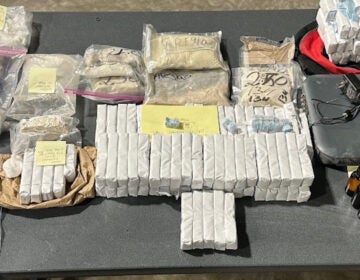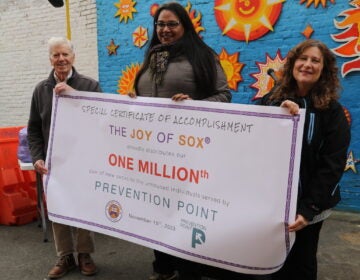Dozens hit Philly’s Kensington Avenue for first ‘large-scale’ cleanup
-

Philadelphia city workers and community groups work to clean up the streets of Kensington. (Kimberly Paynter/WHYY)
-
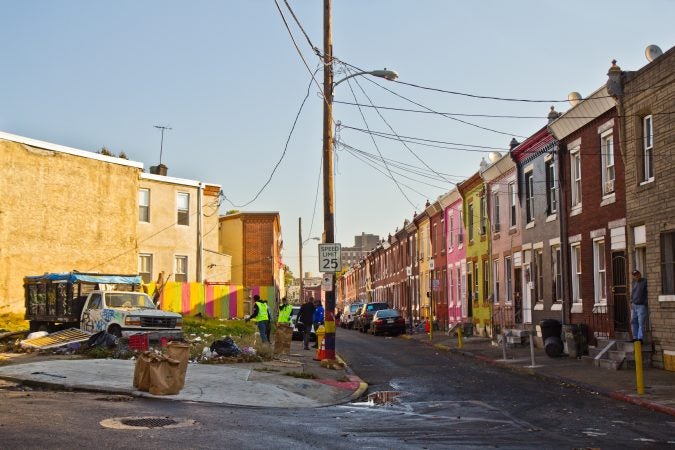
Members of Power Corp clean up around McPherson Square in Kensington. (Kimberly Paynter/WHYY)
-
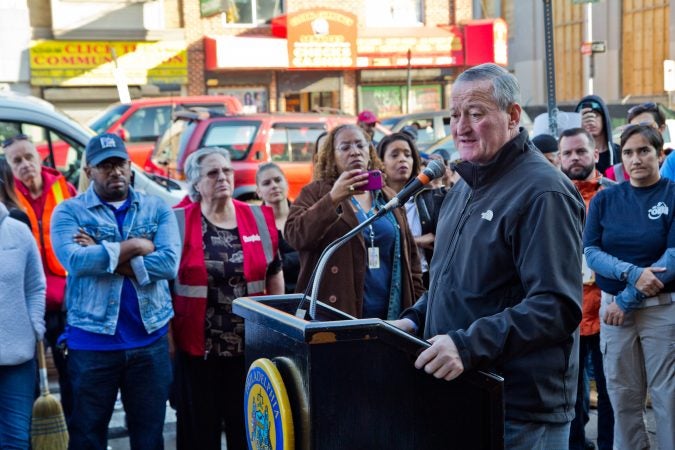
Philadelphia Mayor Jim Kenney describes the city’s efforts to clean up Kensington Thursday morning. (Kimberly Paynter/WHYY)
-
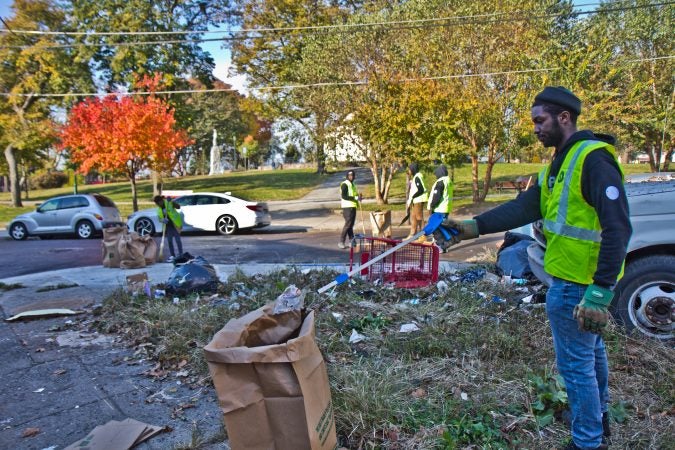
Members of Power Corp clean up around McPherson Square in Kensington. (Kimberly Paynter/WHYY)
-

File photo: City workers and community groups work to clean up McPherson Square and the area around it, including disposing of used needles. (Kimberly Paynter/WHYY)
-
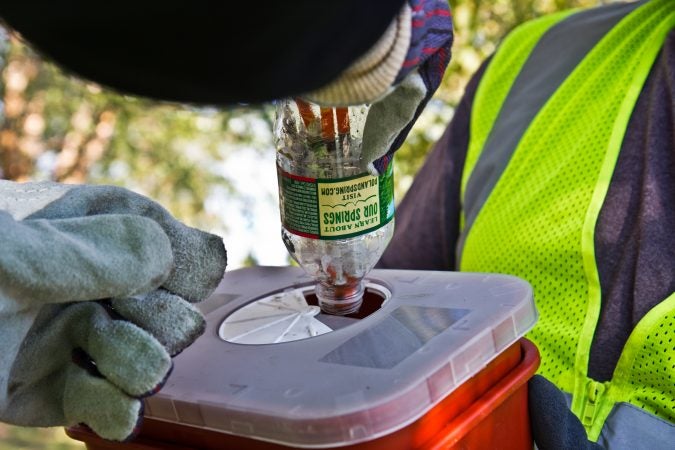
City workers and community groups work to clean up McPherson Square and the area around it. They were safely disposing of used needles. (Kimberly Paynter/WHYY)
-
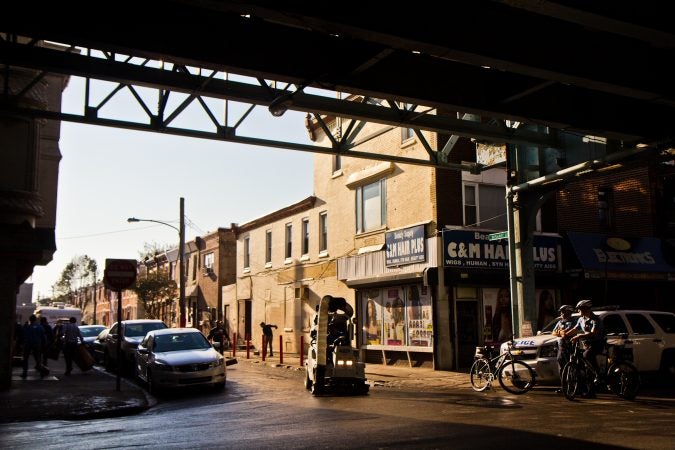
City workers and community groups work to clean up the streets of Kensington. (Kimberly Paynter/WHYY)
-
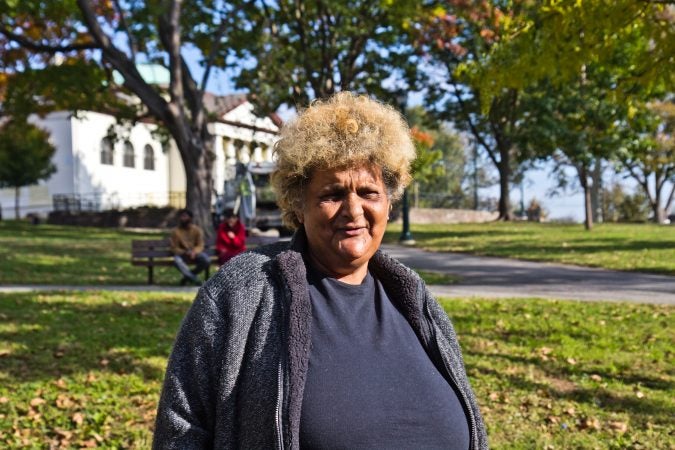
Ruth Martinez is a Kensington resident. (Kimberly Paynter/WHYY)
-
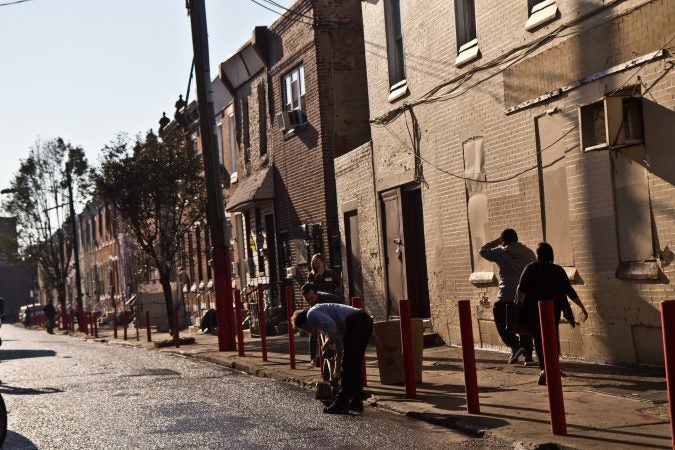
City workers and community groups work to clean up the streets of Kensington. (Kimberly Paynter/WHYY)
-
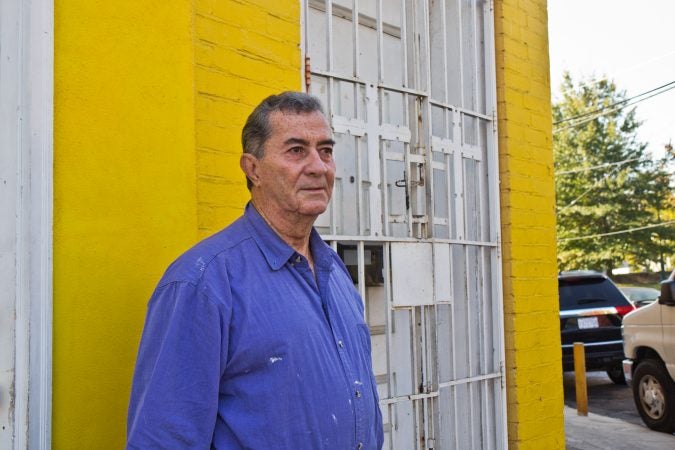
Benjamin Serrano watches the clean up from F and Potter Streets in Kensington. (Kimberly Paynter/WHYY)
-
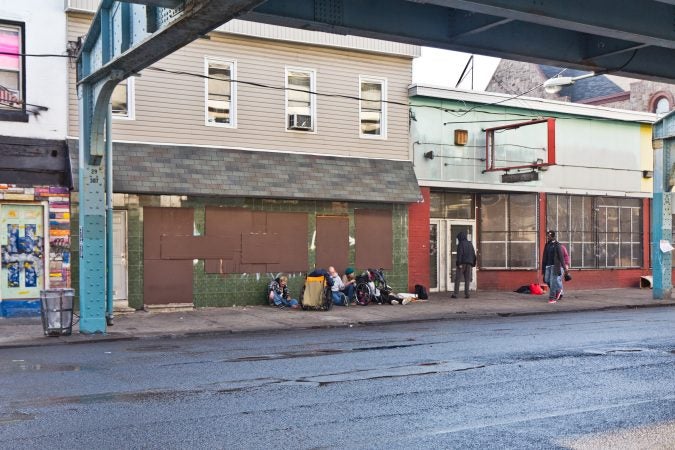
Kensington has been called “ground zero” in the battle again opioid addiction in Philadelphia. (Kimberly Paynter/WHYY)
-
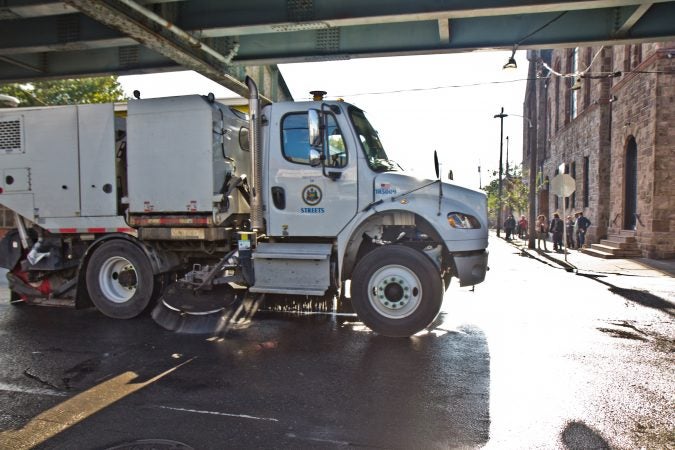
A street sweeper works along Kensington Avenue in Philadelphia. (Kimberly Paynter/WHYY)
Miguel Sanders stopped in his tracks.
Towards the tail end of the morning rush on Thursday, dozens of volunteers swarmed the busy sidewalk below the Allegheny stop along Philadelphia’s Market-Frankford El. Steps away on Kensington Avenue, city trucks barreled up and down the commercial corridor, hosing down the asphalt and clearing out storm drains.
“There ain’t no point in time when this part of the city is ever clean,” said Sanders, after briefly documenting the chaotic scene with his cell phone. “It’s horrible down here.”
The city agrees, which is why it’s planning several cleanups in this section of Kensington as part of the Philadelphia Resilience Project, an emergency program launched last month to combat the city’s opioid crisis, which contributed to the lion’s share of the 1,217 drug overdose deaths recorded by the city in 2017.
Kensington, home to what’s considered the largest open-air drug market on the East Coast, is the heart of the city’s epidemic.
The project, kick-started by an Oct. 3 executive order from Mayor Jim Kenney, is also responsible for placing red syringe disposal boxes — large “SHARPS” containers – around the neighborhood to try to reduce the number of used needles littering the streets.
Additionally, the city plans to clear out two remaining homeless encampments just north of Lehigh Avenue on Frankford Avenue and Emerald Street. It will also increase police presence in the neighborhood.
At the end of May, the city cleared two other encampments – formed under the same railroad bridge – on Kensington Avenue and Tulip Street as part of a month-long program offering shelter and drug treatment.
Thursday’s cleanup along Kensington Avenue, a four-hour effort along a mile-long stretch between Lehigh and Allegheny avenues, was the first one – a signal to the community, officials said, that the city is rolling up its sleeves to make life better for residents and those struggling with addiction who live – and use – on the streets.
“We will be here for you. We will be here with you. It’ll take some time, but we’re not giving up. There’s no such thing as throwaway people. And there’s no such thing as throwaway neighborhoods,” said Mayor Kenney during a press conference by the entrance of the El.
City Councilwoman Maria Quiñonez-Sanchez, who represents residents in the neighborhood, was more blunt when it was her turn at the podium.
“Kensington has been sympathetic. Kensington residents have been patient – pero no más. No más,” she said.
No more.
On East Wishart Street, volunteers swept the sidewalks and cleared trash bunched in between front stoops.
Near Lehigh Avenue, on the 2800 block of Allegheny Avenue, the Community Life Improvement Program – CLIP – painted doors and windows of vacant properties.
Along the edges of McPherson Square – known in the neighborhood as “Needle Park” because so many drug users inject heroin there – two crews with Power Corps, a city-based AmeriCorps initiative, swept the street and raked out a grassy, trash-strewn lot.
“From my experience, when we clean things up, people are less inclined to make it dirty again,” said training and curriculum manager Nicole Bullock.
Neighbors had mixed feelings about the cleanup. While they admire and appreciate the effort, they’re skeptical it will have any long-term impact.
Still, residents like Benjamin Serrano say the neighborhood has to change. For the last five years, he’s lived across the street from McPherson Square. He said he’s tired of stepping over needles and having to wash away human urine and feces from the sidewalk in front of his house.
“It’s not good for kids, it’s not good for good people. They got to clean these people out of here,” said Serrano.
Ryan Michaels – one of “these people” – also has his doubts about the cleanup, but also the project overall. The drug trade, he said, is too entrenched in Kensington to ever completely disappear.
“It probably is a whole-hearted effort on paper, but everybody knows it’s not going to work,” said Michaels, who moved to Kensington from New Jersey five years ago after his addiction to prescription pain pills led him to heroin.
And yet, he sees why the city is trying to loosen the grip opioids have over the neighborhood, which now has the largest homeless population in the city, with many of them addicted.
“If I was raising a family in the neighborhood, I wouldn’t want dope around there, I wouldn’t want people shooting up around there,” said Michaels. “I would love to come home from work with a peaceful, white picket fence house and not have to worry about somebody [overdosing] on my front lawn.”
The Resilience Project, funded with existing city dollars, will be evaluated after 90 days, but the city plans to secure money for it to run through June 2019 with the help of fundraising.
WHYY is your source for fact-based, in-depth journalism and information. As a nonprofit organization, we rely on financial support from readers like you. Please give today.




